GE&EL+ Regenerative Load
AC/DC REGENERATIVE CONVERTER
GE&EL+ vAC/DC SiC
The GE&EL+ vAC/DC SiC is the most complete and versatile converter in the regenerative energy testing market. The whole CINERGIA’s catalogue in a single unit. A Grid Emulator (GE), an Electronic Load (EL) and a DC Bidirectional (B2C). This converter with SiC Technology is suitable for most test applications in Renewable Energies, Power HiL, Smartgrids, Batteries, and Electrical Vehicles.
Featured Benefits
- Higher Switching Frequency
- Higher Bandwidth
- Reduced Ripple
- Increased Efficiency
- Same Current Capacity in DC or AC
- Battery Emulation and Testing
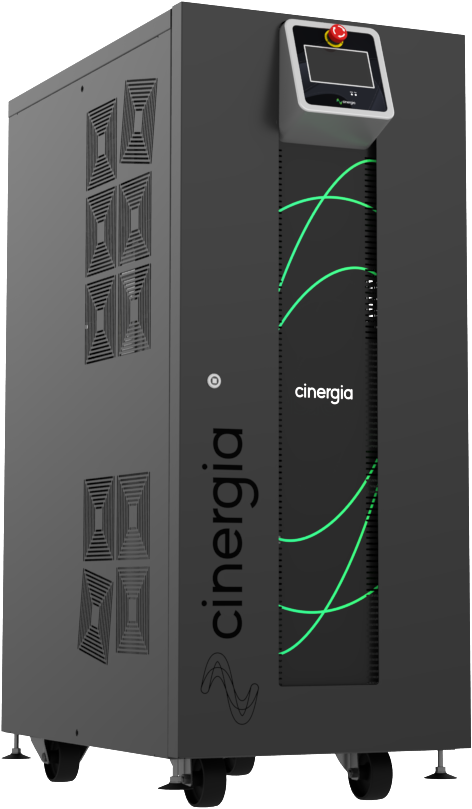
Functionalities
- Bidirectional and Regenerative
- Clean grid current: THDi < 3% and PF > 0.98
- Complete DC Load/Source
- Full 4Q AC Grid Emulator
- Power Amplifier for Power HiL
- Full 4Q AC Electronic Load
Main Applications
 Electromobility
Electromobility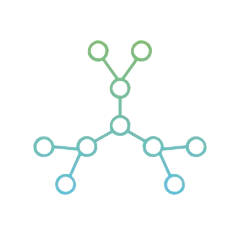 Smart Grids
Smart Grids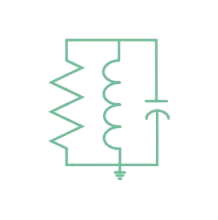 Anti-Islanding
Anti-Islanding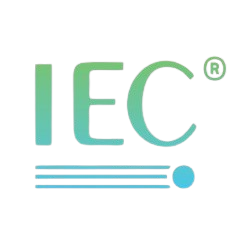 IEC Testing
IEC Testing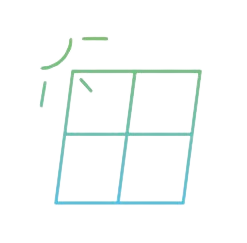 Photovoltaic
Photovoltaic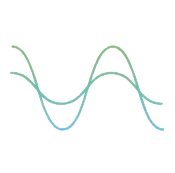 Academical & Industrial Test
Academical & Industrial Test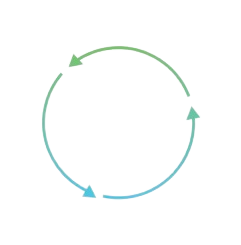 Power Hill
Power Hill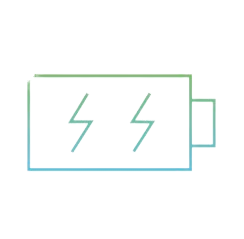 EnergyStorage System
EnergyStorage System
Benefits of Higher Switching Frequency
In switched power converters, as the converters from Cinergia, the power semiconductors work in two states: completely OFF (zero current) or entirely ON (near zero voltage). While transiting from one state to the other, the voltages and currents do not change immediately and therefore are both non-zero during some short time. This current-voltage crossover generates power losses in the semiconductor at each switching cycle, which happens at 15 kHz.
The main benefit of SiC MOSFETs is the faster switching time, thus reducing the current-voltage crossover duration, and therefore reducing the losses at each commutation.
As the losses at each commutation are reduced, the switching frequency of the SiC MOSFET can be increased without increasing the total losses or even reducing the switching losses compared to the standard IGBT.
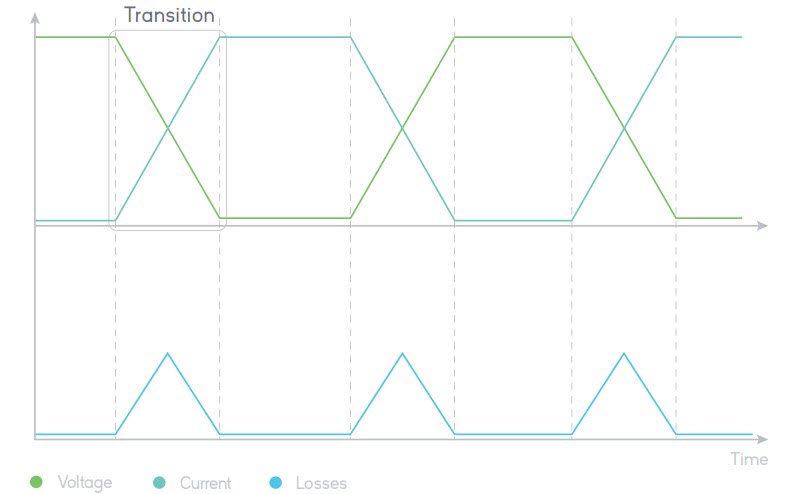
The output filtering stage can be reduced when the converter’s switching frequency increases, and the output filtering stage can be reduced. That is, it needs less attenuation for the same output ripple. This implies that the cutoff frequency of the filter increases, and therefore also the resonance frequency of this filter. These effects increase the bandwidth of the control and, thus, the bandwidth of the whole converter.
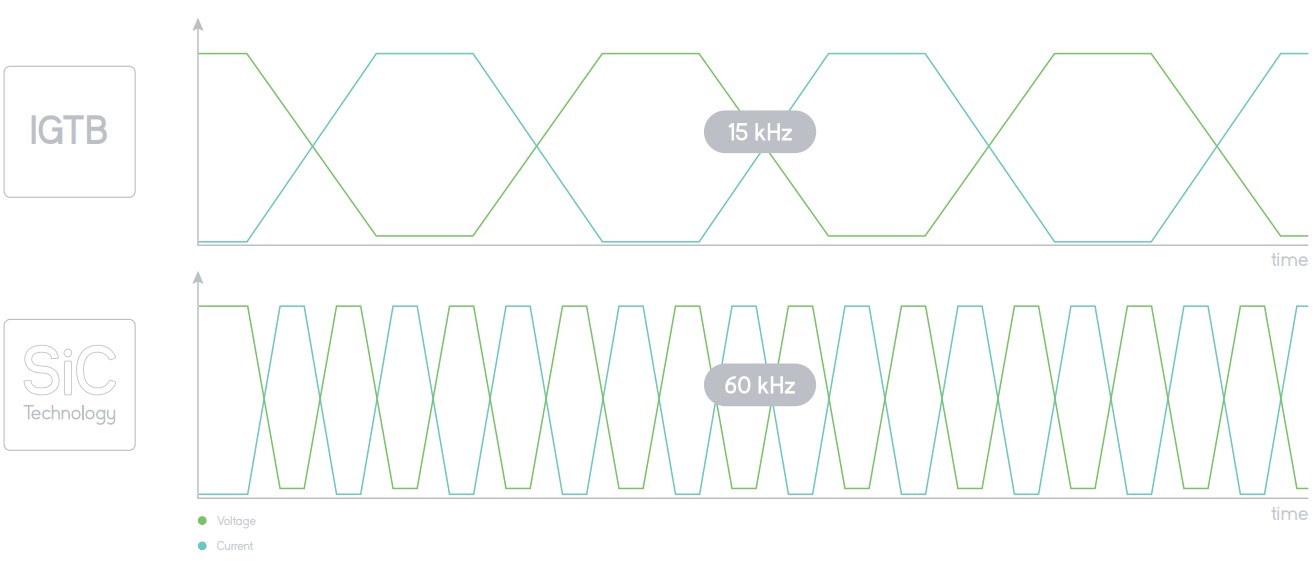
Bandwidth
A higher bandwidth of the converter translates into a better capacity to control fast-changing and high-frequency signals, which provides the following direct benefits for the user:
- A higher slew rate of output currents and voltages is especially noticeable when the equipment is used in power amplifier mode.
- But this is also very useful in any other mode to maintain the given set point while supporting fast transients and disturbances from the equipment connected to the output.
- Capacity to generate fundamental frequencies from 10 Hz to 1000 Hz.
- The voltage-frequency limit of the equipment is increased from 46000 V·Hz to 230000 V·Hz, which allows fundamentals of higher amplitude and frequency (230V @ 1000 Hz) and more harmonic content.
- Better control of harmonics up to 5000 Hz.
Acoustic noise
Standard Equipment of the same power that uses IGBTs has a switching frequency of 15 kHz, which falls in the higher range of the human audible range (20 Hz - 20 kHz), but it is still audible. This frequency normally represents a compromise between the audible noise and the switching losses of traditional IGBTs. Thanks to the SiC MOSFETs in our equipment, the switching noise is increased up to 60 kHz, making the switching completelyinaudible.

Ripple
Despite the reduction of the output filter, the increase of the switching frequency is high enough to significantly improve the current ripple (3 times) and voltage ripple (2.75 times) due to the switching. This is thanks to an equilibrated selection of hardware elements and control adjustment.
Efficiency
The SiC MOSFETs are much more efficient than the IGBTs, not only regarding the switching losses but also regarding the conduction losses. Additionally, because the power filter is reduced, the losses of this filter are also reduced. Lastly, the MOSFET also incorporates a more efficient antiparallel SiC diode that also reduces the losses. All the effects translate into an increase in efficiency, despite that the switching frequency has been increased four times.
Thanks to the use of SiC MOSFETs at both converters of the backto-back configuration, the peak efficiency of the whole system is boosted above 94%.
Current in DC Mode
The SiC MOSFETs used in the converter also include a SiC diode in antiparallel, which has better electrical characteristics than a standard silicon diode, specifically switching and conduction losses. On one side, this helps reduce global losses, but on the other, it allows higher re-circulation currents, which is a limiting factor when working in DC at nominal current and low voltages. Thanks to this SiC diode, our equipment now has the same current capacity in DC as in AC mode.
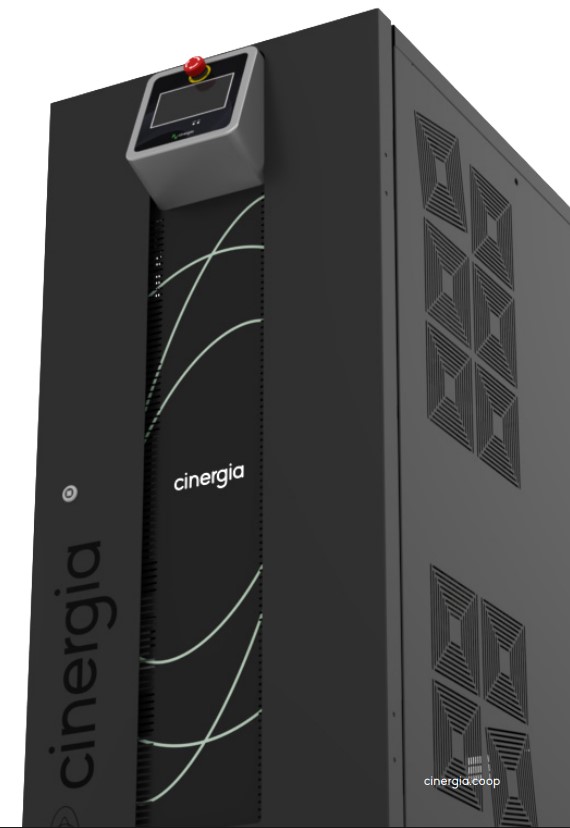
Options
Choose your options:
- Three channel mode: allows different operation mode start/stop/reset per channel
- Isolation monitor (advised for IT systems)
- Anti-islanding monitor (only advised in net injection to the grid and following local regulations)
- RS485
- Battery Emulation
- Battery Test
- PV Panel Emulation
- Predefined Tests: LVRT, IEC 61000-4-11, 4-13, 4-14, 4-28 (consult us for specific Test)
- External gateway for RS232, CAN and others (consult us for specific gateway)
Models
| Reference | AC Power Rated | AC Current Rated RMS 3 channels / 1 channel |
DC Power Rated | DC Current Rated RMS 3 channels / 1 channel |
Weight (kg) | Dimensions DxWxH (mm) |
|---|---|---|---|---|---|---|
| GE&EL+ 50 vAC/DC SiC + ITi | 50 kW | 73 A / 219 A | 50 kW | ±73A / ±219A | 395 kg | 770 x 835 x 1100 mm |
| GE&EL+ 50 vAC/DC SiC + ITe | 50 kW | 73 A / 219 A | 50 kW | ±73A / ±219A | 200 kg | 770 x 450 x 1100 mm |
Software

The user interface used by CINERGIA devices has been developed by our R&D team, to offer total control of the device, with a comfortable and intuitive design. This allows us to take full advantage of the capabilities of the device, as well as the programming and execution of standardized or self-created tests.
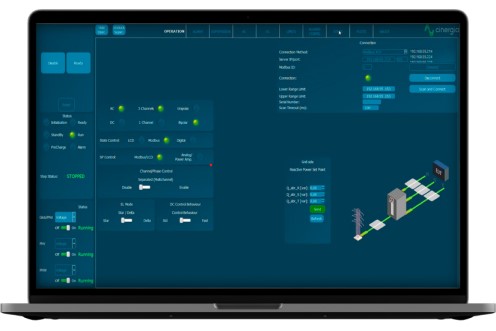
GE and EL Modes
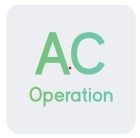
AC Operation
From this panel, the user can set all AC parameters. Each phase can be independently configured: RMS current magnitude, phase delay, harmonics content, free-frequency harmonic and transition ramps. A plot shows the expected real-time waveform, the FFT representation and the numeric data: RMS, peak, CF and THD.
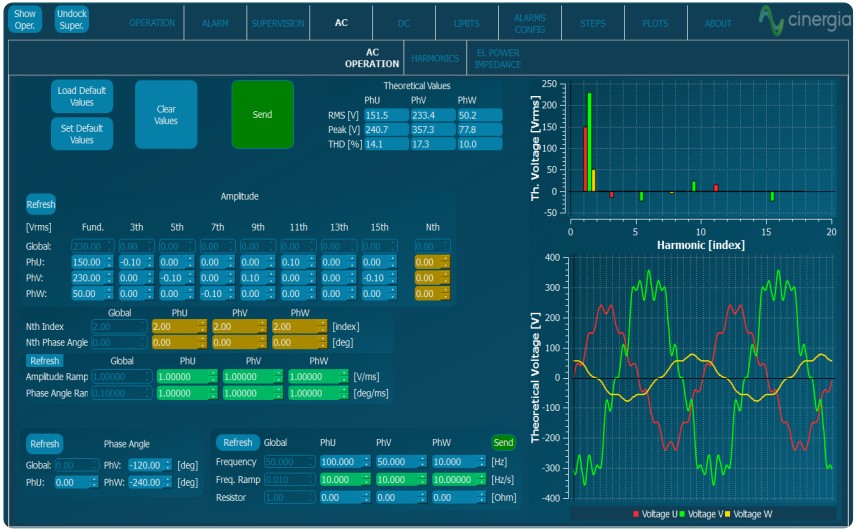
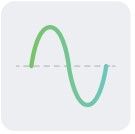
Harmonics
The device can control simultaneously the magnitude of the first 15 harmonics and one free harmonic per phase. The free one allows the generation of sub-harmonics, inter-harmonics and high frequency harmonics up to the 50th, setting both the magnitude and phase delay.
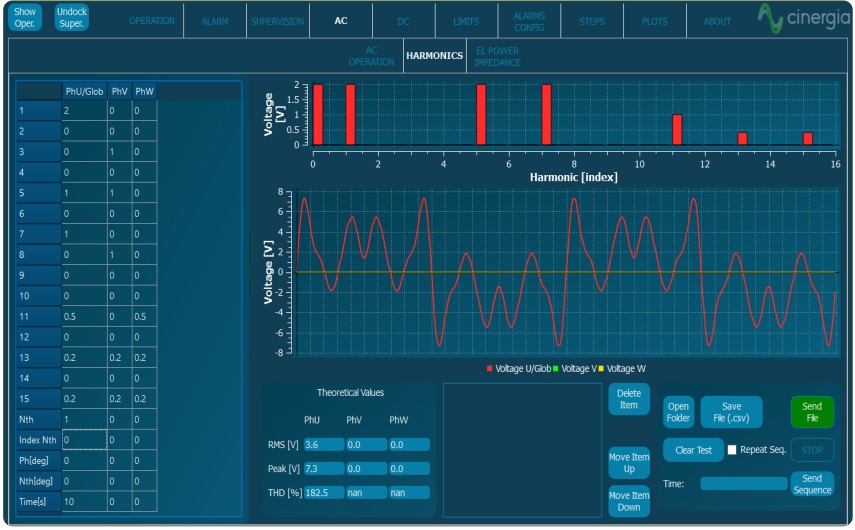
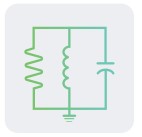
Power and Impedance Control
In Power mode, the active and reactive power of each phase is independently controlled. In Impedance mode, the device emulates an RLC load allowing to parameterize resistance, inductance and capacitance per phase making this device suitable for Anti-Islanding test of grid converters.
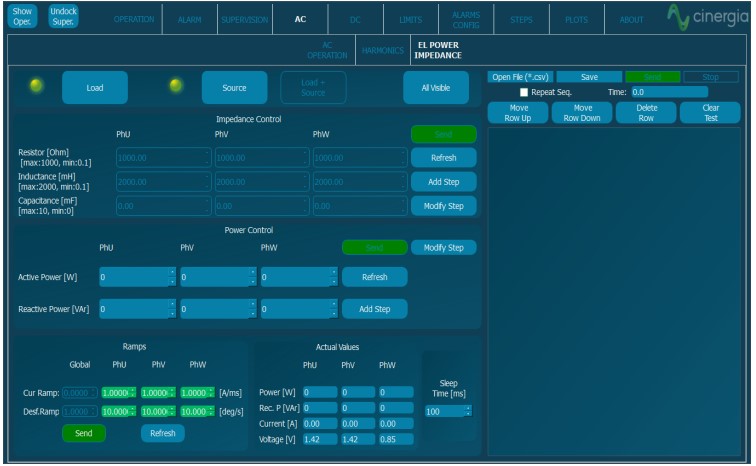
AC
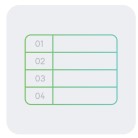
Steps Mode
One of the most remarkable novelties of the new software is the steps functionality. Step test files are saved and executed by the DSP allowing deterministic timing with a resolution of 66µs. The user gains access to all registers of the device to create complex test sequences which run directly in the converter without the need of an external computer.
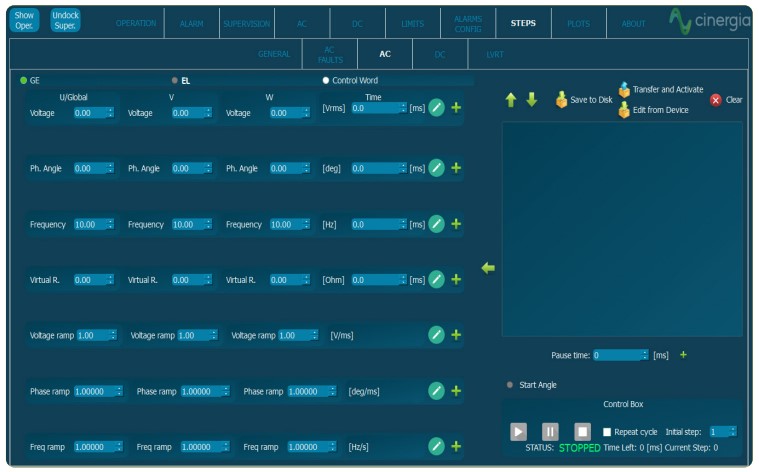
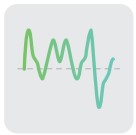
Disturbance Generation
The steps mode includes predefined easy-to-use test panels. The AC faults panel is a powerful yet intuitive editor which allows generating and configuring flicker. Specific profiles can be saved in .csv files, modified, and reused by importing an existing one.
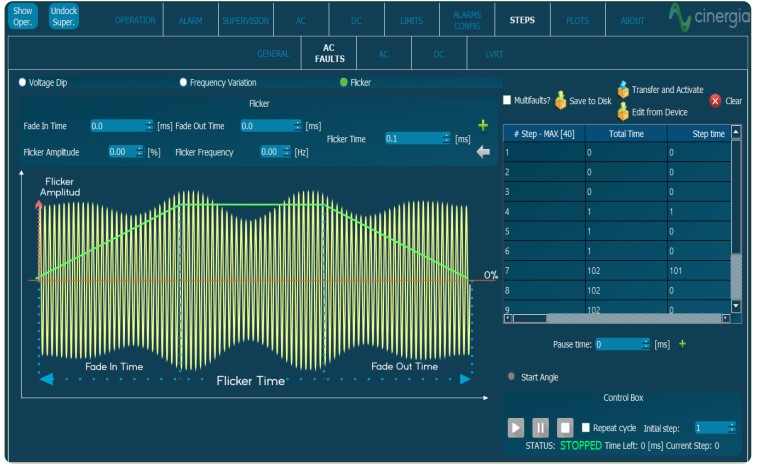

IEC Testing
The last version of software includes a library supporting IEC standard for pre-compliance tests. The profiles defined in the standards are preloaded in the software for a user friendly execution and edition. Currently the following standards are available:
- IEC61000-4/11 - IEC61000-4/13
- IEC61000-4/14 - IEC61000-4/28
*It is mainly intended for pre-compliance testing. Contact us for futher information.
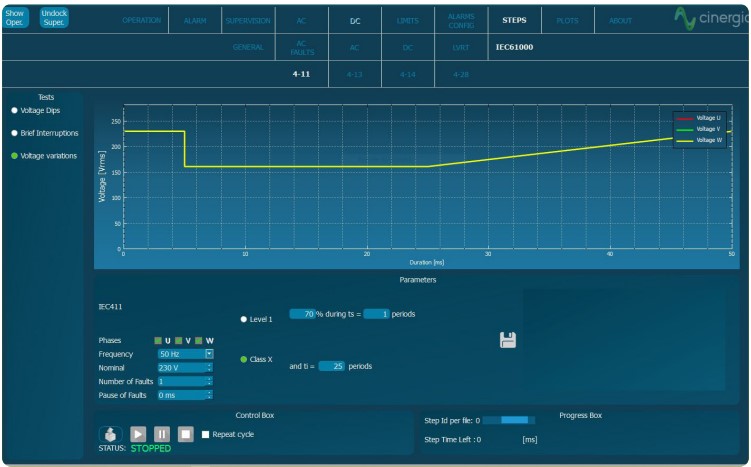
DC

DC Operation
This panel allows the user to access all DC setpoints and limits. Thanks to the unique Multichannel feature, each phase can have a different Operation Mode: voltage, current, power, resistance and advanced DC applications. Transition ramps, voltage and current limits can be modified. The limits for sink and source operation are different for safer testing, specially in battery applications.


Sequence
The User Interface Software integrates a Sequence Editor to create automatic test sequences, save them for future use and import them in .csv files. A smart datalogger can be activated from the LCD of the unit to record automatically the resulting voltage and current measurements with a time resolution of 400 ms.
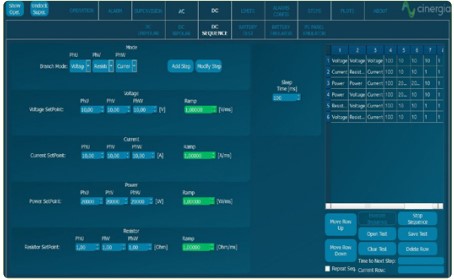

Multichannel
Enabling the Separated Channel Control converts the device in three functionally independent DC Bidirectional Power Supplies, sharing the common negative rail. Each channel can have a different status (ON, OFF, Warning, Alarm), Operation Mode (see Range and Specifications table), Setpoint, Ramp and Limits.
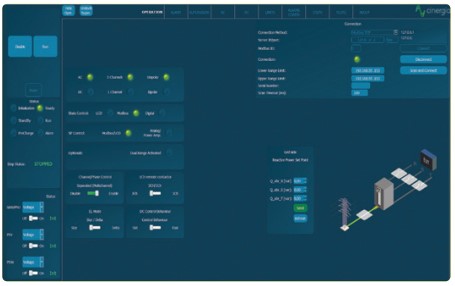

Battery Pack Tester
This functionality enables the user to precisely control the charge, discharge and cycling of a Battery. Basic paramters include the charge/discharge current, fast charge and floating voltages while Advanced parameters add Energy (Ah) and Time as transition conditions. Prof iles for each Battery technology can be saved and imported in .CSV files.
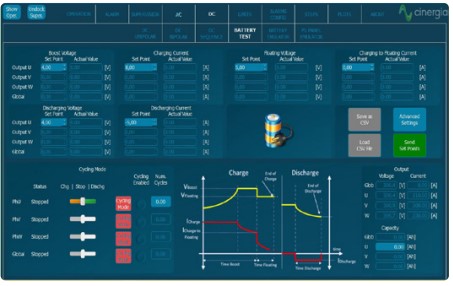

Battery Emulation
The B2C+ integrates a mathematical model to emulate the voltage behaviour of a real battery pack. The output voltage will change as a function of the SOC and Current. By confi guring the provided parameters, the voltage profi le can be adjusted to match different technologies: LiIon, NiMH, NiCd, Pb, Flux, etc.
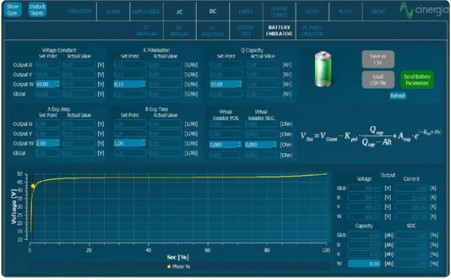

PV Panel Emulation
The PV Panel model is based on the single-diode equivalent circuit of a PV cell and the series-parallel connection of cells to form a panel. A Runtime functionality allows the simulation of a complete day by launching different irradiance and temperature setpoints from a .csv f ile, enabling the user burn-in and functional tests of PV Inverters.
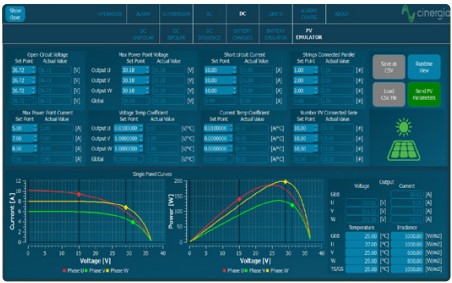
Need to compare products?
Request a Quote Today
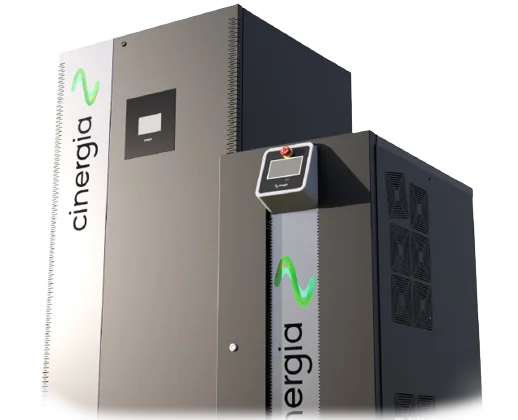
FAQ
The GE&EL+ Regenerative Load is a programmable, bi-directional electronic load that can sink power from the Device Under Test (DUT) and regenerate it back to the grid, making it an efficient solution for testing power supplies, inverters, and renewable energy systems.
Products
Support
Company

